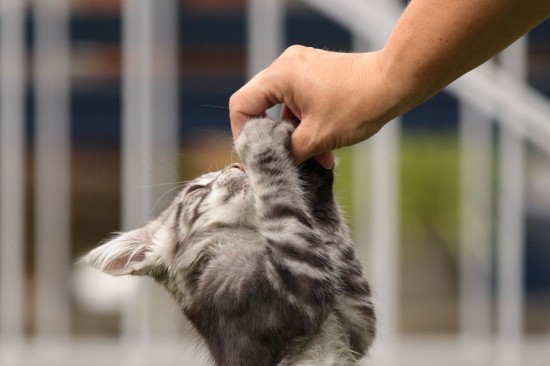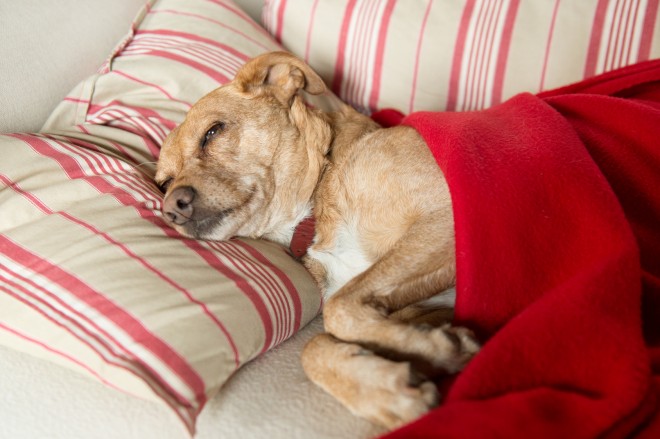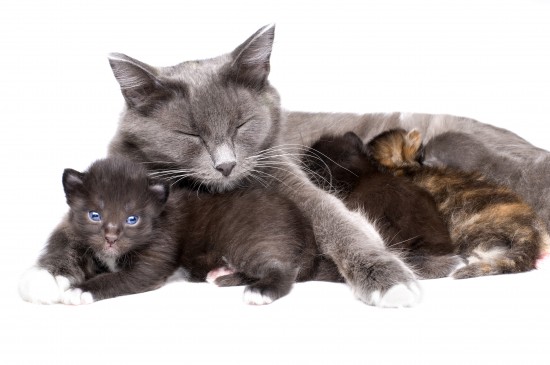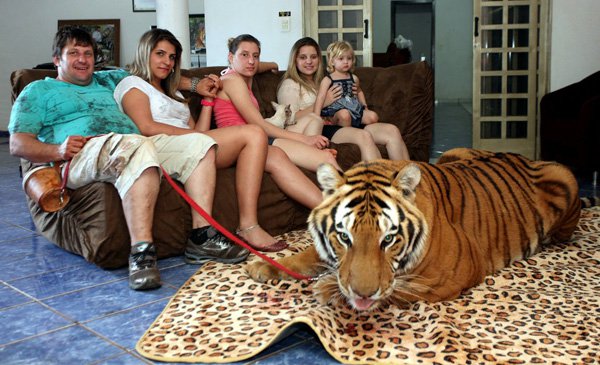

Stroking a cat has known relaxation benefits for owners, but some cats love to ambush your legs, or can attack you when you try to stroke it which is definitely not relaxing and can often be extremely painful! However, from the cat’s point of view its aggression is necessary or appropriate for the situation the cat finds itself in at the time. Although treatment of aggressive behaviour can be very successful it does require appropriate understanding of why the cat is motivated to show aggression.
There are two main reasons for aggression to develop in cats: fear and because they have learnt an inappropriate way of playing with their owner. Fear aggression occurs when the cat is feeling threatened, whereas play behaviour can appear to be aggressive when it is directed at an inappropriate target such as human hands and feet.
To learn what situations are normal and safe cats need to experience them very early in life (between 2 and 8 weeks of age). Things that are not encountered during this period will be more likely to be scary to a cat when it encounters them later in life. For example, contact with people during this period will affect a cat’s perception of people throughout its life. Cats that were not well socialised to people as young kittens will be less likely to approach people and may feel threatened by contact with them. Alternatively, cats may become fearful due to an aversive experience later in life. Individual cats can also feel threatened by different levels of interaction with people. For example one cat might feel threatened by a person approaching, whereas another may enjoy close contact but feels threatened when picked up. If a cat shows aggression and the person moves away or puts it down, then the cat learns that its aggressive behaviour has been successful in that situation, which was threatening to it, and is likely to use it in similar threatening situations again in the future.
The aggression is often sudden and unpredictable and can include attacking people by grabbing them with claws and biting them. Sudden movement, such as passing feet, or high-pitched sounds may trigger this behaviour. Generally it develops through inappropriate play behaviour in kittens. Problems can occur when owners use their fingers or feet to play with their kitten - the kitten grows up thinking that this is the normal way to interact with people. This behaviour is further reinforced by the reaction of the owner’s behaviour, such as running around screaming. This is because movement and noise is what reinforces both play and predatory behaviour in kittens and adult cats. Additionally, some cats find this behaviour is very successful at getting attention from their owners as it works to get a response every time!
Aggression can also occur for a number of other reasons, such as frustration or redirected aggression. Redirected aggression occurs when a cat becomes aroused by something, such as the presence of another cat, but is unable to attack it and takes this aggression out on the closest moving object, commonly the owner. Aggression can also develop as a direct result of an illness, or more commonly the illness makes the cat more likely to show aggression in situations that threaten it as it makes them feel less tolerant. Pain is another common reason for cats to show aggression - they can become defensive when being touched due to current or previous pain.
You must be careful not to appear threatening to your cat, for example by not trying to interact with him or approach him, if this is when he shows aggression or otherwise looks uncomfortable with the situation. This will prevent further reinforcement of the aggression and will allow your cat to learn that he can relax around people as they are no longer a ‘threat’. It will then be possible to start associating actions that your cat is uncomfortable with, for example being approached or stroked for a long time, with food rewards. Place some tasty food next to your cat’s hiding place then sit far enough away so that he will tolerate your presence, and come out to eat the food. As a result your cat will form an association between your presence and something good. In very small stages, place the food closer to where you are sitting so he is encouraged to approach. Gradually build up the number of times you stroke your cat before giving him a food reward, building up from one single stroke initially. Cats that are poorly socialised to people are unlikely to ever become cuddly lap cats, but by following this programme your cat will learn to tolerate the presence of people instead of being fearful and showing aggression if approached.
To stop your cat from playing aggressively you must change the consequences of his behaviour. Because cats who play aggressively generally find the reaction of their ‘victim’ (screaming and running around) so rewarding they are likely to continue doing it again in the future. Therefore, you must not reward ambushes by acting in this manner, i.e. you must ignore your cat’s attack. You may need to wear protective clothing, such as thick trousers or boots, at all times in the house to protect you from injury and so you can easily ignore attacks. You must stay perfectly still when your cat is playing aggressively and must not talk to, or even look at him, as he may find any response rewarding. Your cat will learn that he no longer gets a response by pouncing on you or your family so will gradually stop behaving in this way. Instead of reacting to the undesirable play behaviour, use your attention as a reward for good behaviour - praise your cat when he is playing with his own toys or with you in an acceptable fashion, for example with fishing rod toys, thus ‘redirecting’ your cat’s aggressive behaviour onto more appropriate targets. Environmental enrichment may also help to reduce inappropriate play: puzzle feeders, climbing and hiding places, and scratching posts will all occupy your cat’s time and leave him with less motivation to ambush you.
 Would You Know If Your Cat Had Fleas?
Would You Know If
Would You Know If Your Cat Had Fleas?
Would You Know If
 Aspirin Poisoning In Dogs
Aspirin Poisoning
Aspirin Poisoning In Dogs
Aspirin Poisoning
 Why Do Dogs Bark?
Why Do Dogs Bark?
Why Do Dogs Bark?
Why Do Dogs Bark?
 Cat Breeding - The Arrival And Early Days Of Your Kittens
Cat Breeding - Th
Cat Breeding - The Arrival And Early Days Of Your Kittens
Cat Breeding - Th
 Give Your Bunny Pets Huge Rabbit Hutches That Makes it His Bedroom
Give Your Bunny Pets Huge Rabbit Hutches That Makes it His
Give Your Bunny Pets Huge Rabbit Hutches That Makes it His Bedroom
Give Your Bunny Pets Huge Rabbit Hutches That Makes it His
Copyright © 2005-2016 Pet Information All Rights Reserved
Contact us: www162date@outlook.com